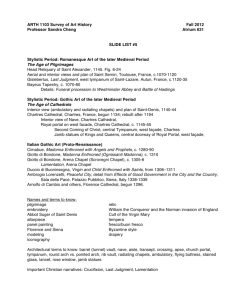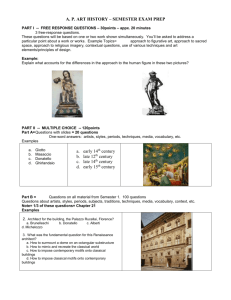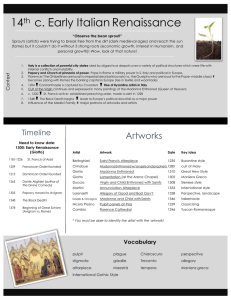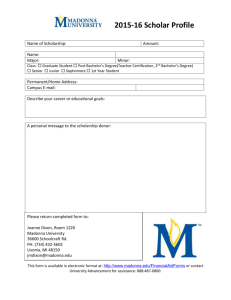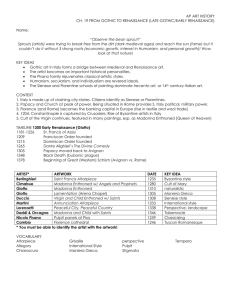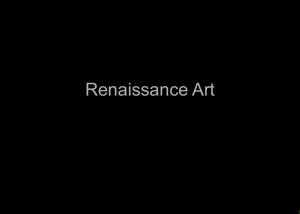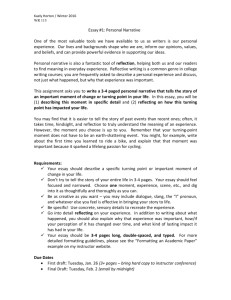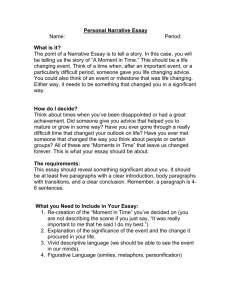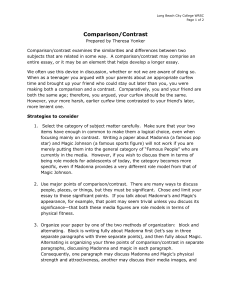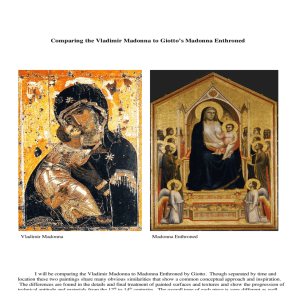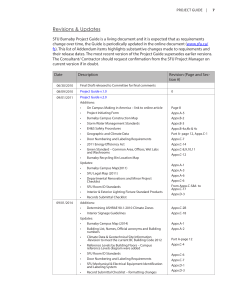Document
advertisement
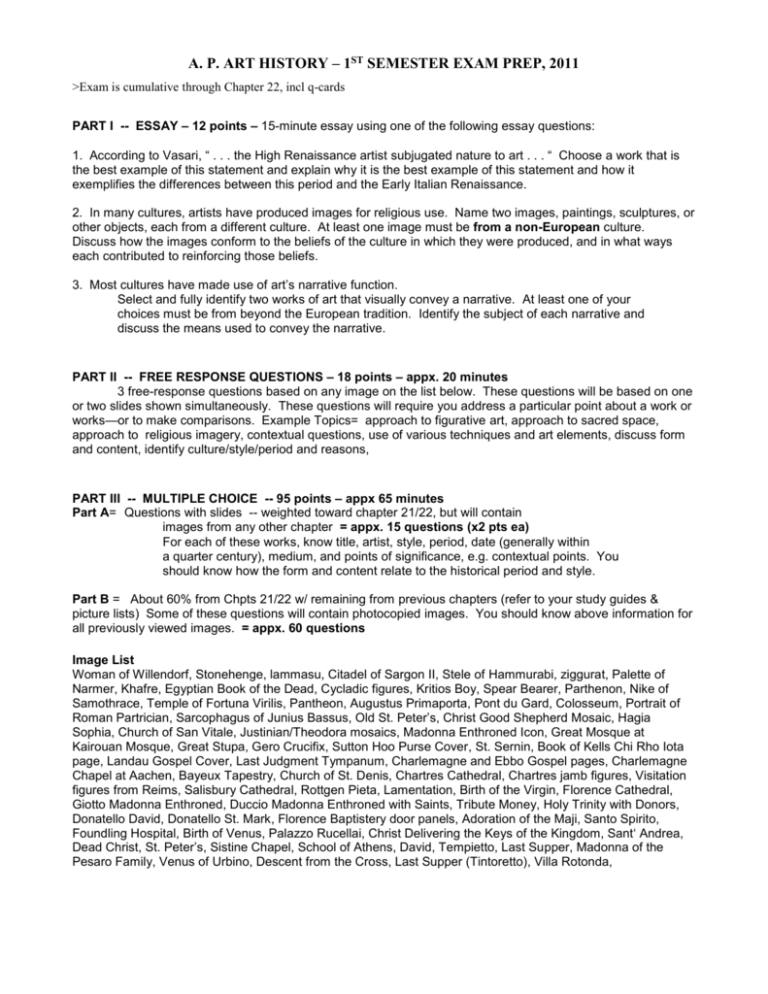
A. P. ART HISTORY – 1ST SEMESTER EXAM PREP, 2011 >Exam is cumulative through Chapter 22, incl q-cards PART I -- ESSAY – 12 points – 15-minute essay using one of the following essay questions: 1. According to Vasari, “ . . . the High Renaissance artist subjugated nature to art . . . “ Choose a work that is the best example of this statement and explain why it is the best example of this statement and how it exemplifies the differences between this period and the Early Italian Renaissance. 2. In many cultures, artists have produced images for religious use. Name two images, paintings, sculptures, or other objects, each from a different culture. At least one image must be from a non-European culture. Discuss how the images conform to the beliefs of the culture in which they were produced, and in what ways each contributed to reinforcing those beliefs. 3. Most cultures have made use of art’s narrative function. Select and fully identify two works of art that visually convey a narrative. At least one of your choices must be from beyond the European tradition. Identify the subject of each narrative and discuss the means used to convey the narrative. PART II -- FREE RESPONSE QUESTIONS – 18 points – appx. 20 minutes 3 free-response questions based on any image on the list below. These questions will be based on one or two slides shown simultaneously. These questions will require you address a particular point about a work or works—or to make comparisons. Example Topics= approach to figurative art, approach to sacred space, approach to religious imagery, contextual questions, use of various techniques and art elements, discuss form and content, identify culture/style/period and reasons, PART III -- MULTIPLE CHOICE -- 95 points – appx 65 minutes Part A= Questions with slides -- weighted toward chapter 21/22, but will contain images from any other chapter = appx. 15 questions (x2 pts ea) For each of these works, know title, artist, style, period, date (generally within a quarter century), medium, and points of significance, e.g. contextual points. You should know how the form and content relate to the historical period and style. Part B = About 60% from Chpts 21/22 w/ remaining from previous chapters (refer to your study guides & picture lists) Some of these questions will contain photocopied images. You should know above information for all previously viewed images. = appx. 60 questions Image List Woman of Willendorf, Stonehenge, lammasu, Citadel of Sargon II, Stele of Hammurabi, ziggurat, Palette of Narmer, Khafre, Egyptian Book of the Dead, Cycladic figures, Kritios Boy, Spear Bearer, Parthenon, Nike of Samothrace, Temple of Fortuna Virilis, Pantheon, Augustus Primaporta, Pont du Gard, Colosseum, Portrait of Roman Partrician, Sarcophagus of Junius Bassus, Old St. Peter’s, Christ Good Shepherd Mosaic, Hagia Sophia, Church of San Vitale, Justinian/Theodora mosaics, Madonna Enthroned Icon, Great Mosque at Kairouan Mosque, Great Stupa, Gero Crucifix, Sutton Hoo Purse Cover, St. Sernin, Book of Kells Chi Rho Iota page, Landau Gospel Cover, Last Judgment Tympanum, Charlemagne and Ebbo Gospel pages, Charlemagne Chapel at Aachen, Bayeux Tapestry, Church of St. Denis, Chartres Cathedral, Chartres jamb figures, Visitation figures from Reims, Salisbury Cathedral, Rottgen Pieta, Lamentation, Birth of the Virgin, Florence Cathedral, Giotto Madonna Enthroned, Duccio Madonna Enthroned with Saints, Tribute Money, Holy Trinity with Donors, Donatello David, Donatello St. Mark, Florence Baptistery door panels, Adoration of the Maji, Santo Spirito, Foundling Hospital, Birth of Venus, Palazzo Rucellai, Christ Delivering the Keys of the Kingdom, Sant‘ Andrea, Dead Christ, St. Peter’s, Sistine Chapel, School of Athens, David, Tempietto, Last Supper, Madonna of the Pesaro Family, Venus of Urbino, Descent from the Cross, Last Supper (Tintoretto), Villa Rotonda, EXAMPLES OF FREE RESPONSE QUESTIONS Identify the respective periods of these works and explain how and why they differ in their approach to subject matter. Identify this site and explain how its form is related to its function and context Explain how this work expresses the ideals and aims of its period.
